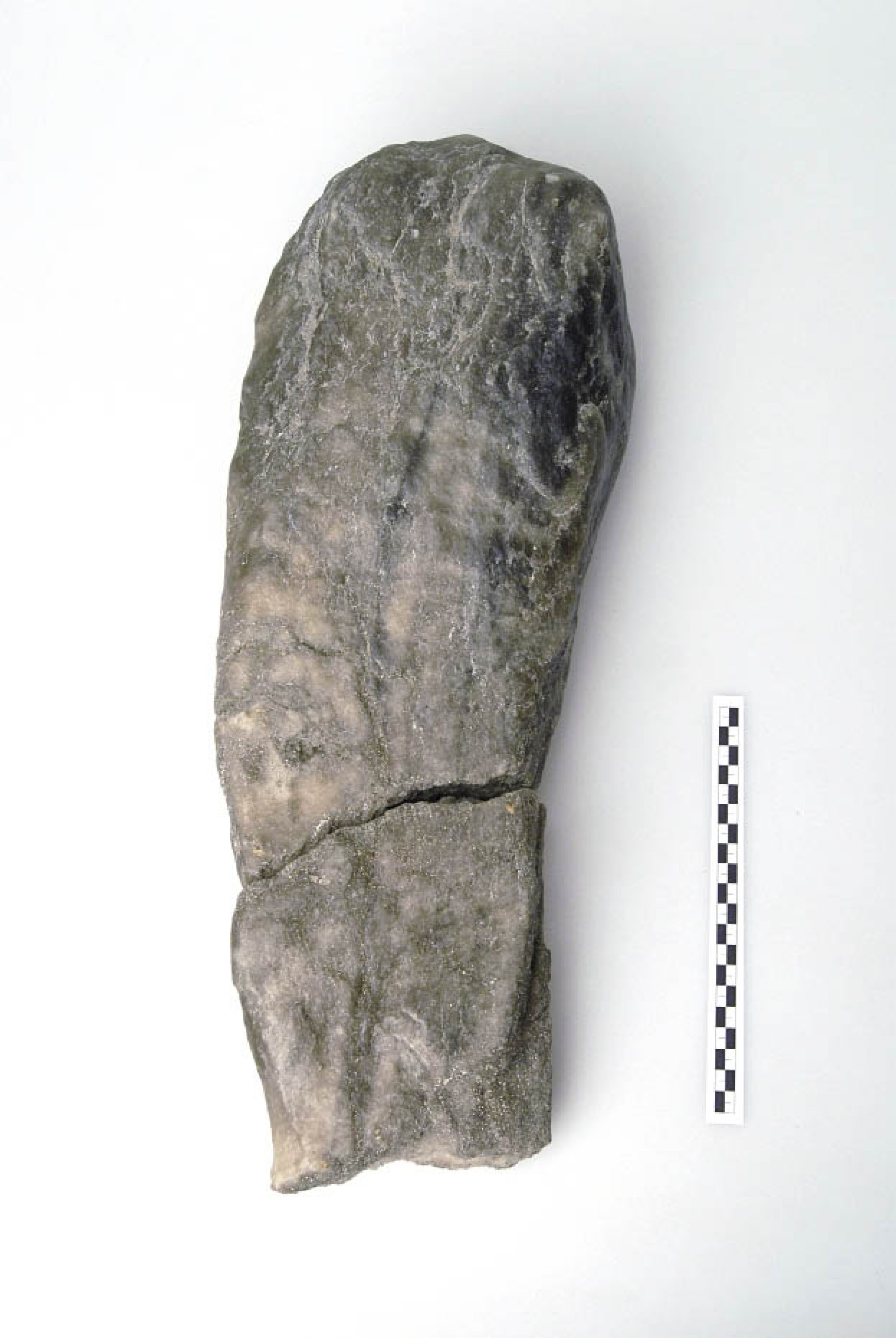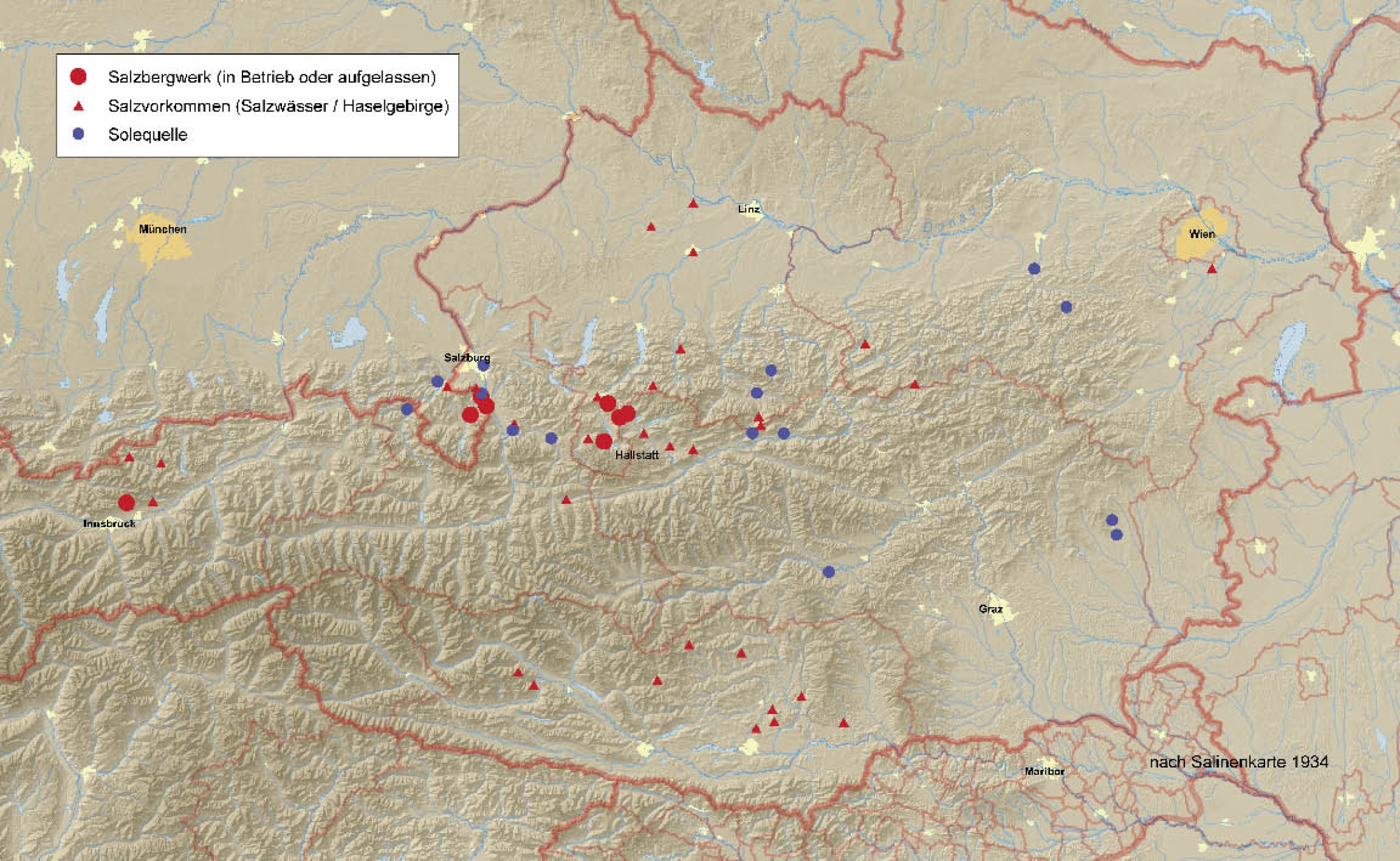Other prehistoric centers of salt production in the Eastern Alps
The Hallstatt Culture saw the end of the monopoly position of Hallstatt salt production. If one may safely assume for the Bronze Age that Hallstatt was the only big supplier of rock salt in the Eastern Alps, then the situation changed dramatically in the 6th century BC. The Dürrnberg plateau near Hallein, only 44 km from Hallstatt, developed into a powerful competitor. There is now some evidence that there were further salt production sites in the Alpine region, although operating with different techniques.The finds from Unken in the Saalach Valley suggest that salt was extracted there from natural saline water. Nevertheless, Hallstatt and later Hallein must have supplied a huge area with salt, probably reaching to the regions south of the Alps. The nearest salt producers were located in South and Central Germany and in Eastern Europe. The tablets of solid rock salt produced in Hallstatt in the Early Iron Age may have been a response to competitors: salt tablets of distinctive shape could have indicated a sort of Hallstatt trade mark, making it possible to distinguish Hallein from Hallstatt salt. Hallstatt succeeded in asserting its dominant position. The Early Iron Age must be considered the golden age of salt mining in Hallstatt.
(Reschreiter, H. – Kowarik, K.)



